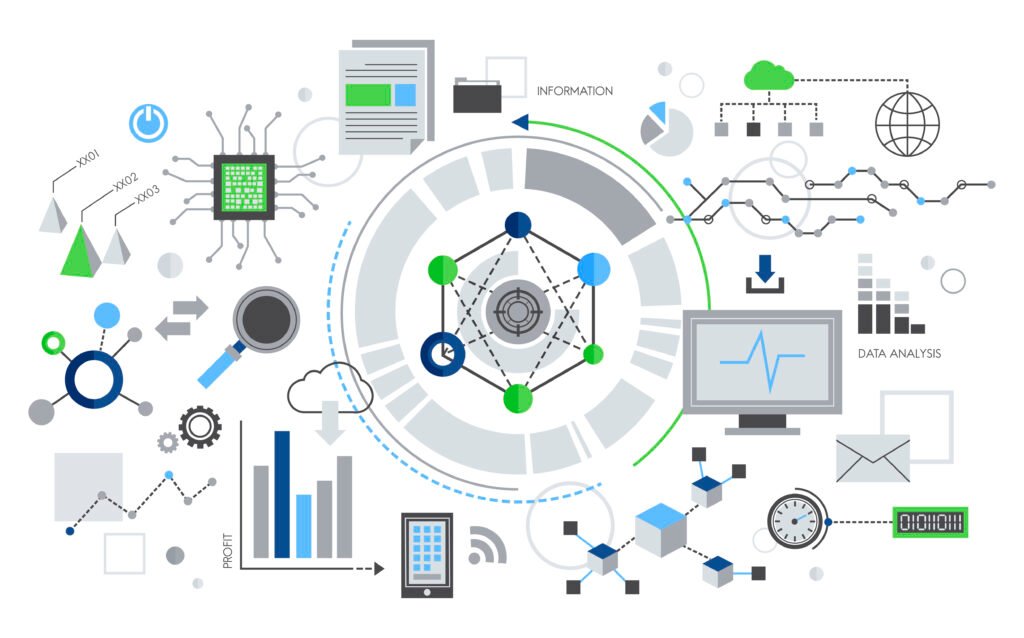What Are the Key Effective Strategies for Digital Information?

In the modern world, digital information is the lifeblood of almost every industry. From personal data to corporate records, the way information is handled can significantly impact efficiency, security, and productivity. Understanding the key strategies for managing digital information effectively is crucial for individuals and organizations alike. This blog explores various approaches to optimize digital information management, ensuring data integrity, accessibility, and security.
Understanding Digital Information
Digital information refers to data that is stored electronically and can be easily accessed, shared, and manipulated using digital devices. This includes text documents, images, audio files, video content, and more. In an age where data drives decision-making, mastering the management of digital information is vital for achieving business objectives and maintaining competitive advantage.
The importance of Digital Information Management
- Enhanced Efficiency: Properly managed digital information allows for quick access and retrieval, saving time and resources.
- Data Security: Implementing robust security measures protects sensitive data from unauthorized access and breaches.
- Improved Decision-Making: Accurate and timely information supports better strategic decisions.
- Compliance: Ensures adherence to data protection regulations, avoiding potential legal issues.
Key Effective Strategies for Digital Information Management
To harness the full potential of digital information, it is essential to implement effective management strategies. Here are some of the most critical strategies to consider:
Data Organization and Classification
Organizing and classifying data effectively ensures that it is easy to locate and use. This involves categorizing data based on its type, relevance, and usage.
- Implement a Logical Folder Structure: Create a hierarchical folder structure that categorizes data by department, project, or function.
- Use Metadata: Apply descriptive metadata to files to improve searchability and context.
- Develop a Taxonomy: Establish a standardized taxonomy for data classification to ensure consistency across the organization.
Data Governance
Data governance involves establishing policies, procedures, and standards for data management. It ensures that data is accurate, secure, and used appropriately.
- Create a Data Governance Framework: Develop a framework that defines roles, responsibilities, and processes for data management.
- Implement Data Stewardship: Assign data stewards to oversee data quality and ensure compliance with governance policies.
- Establish Data Quality Metrics: Define metrics for measuring data quality, such as accuracy, completeness, and consistency.
Data Security and Privacy
Protecting digital information from unauthorized access and breaches is paramount. Implementing strong security measures helps safeguard sensitive data.
- Use Encryption: Encrypt data both at rest and in transit to protect it from unauthorized access.
- Implement Access Controls: Restrict access to sensitive data based on roles and responsibilities.
- Regular Security Audits: Conduct regular security audits to identify vulnerabilities and ensure compliance with security policies.
Data Backup and Recovery
Ensuring that data is backed up and can be recovered in the event of loss or corruption is critical for maintaining business continuity.
- Implement a Backup Strategy: Regularly back up data to multiple locations, including offsite and cloud storage.
- Test Recovery Procedures: Regularly test data recovery procedures to ensure that data can be restored quickly and accurately.
- Automate Backups: Use automated tools to schedule regular backups, reducing the risk of human error.
Data Integration and Interoperability
Integrating data from different sources and ensuring interoperability between systems enhances data usability and supports more informed decision-making.
- Use Data Integration Tools: Implement tools that facilitate the seamless integration of data from multiple sources.
- Standardize Data Formats: Ensure that data is stored in standardized formats to promote interoperability.
- Develop APIs: Create application programming interfaces (APIs) to enable data exchange between different systems.
Data Lifecycle Management
Managing the entire lifecycle of data, from creation to disposal, helps maintain data quality and compliance with regulations.
- Define Data Retention Policies: Establish policies for retaining data based on legal and business requirements.
- Implement Data Archiving: Archive inactive data to optimize storage and ensure it remains accessible for future use.
- Secure Data Disposal: Use secure methods for disposing of data that is no longer needed, such as shredding or secure deletion.
Data Analytics and Business Intelligence
Leveraging data analytics and business intelligence tools enables organizations to derive valuable insights from their data.
- Use Analytics Tools: Implement tools that support data analysis, visualization, and reporting.
- Develop Data Dashboards: Create dashboards that provide real-time insights into key metrics and performance indicators.
- Foster a Data-Driven Culture: Encourage the use of data in decision-making processes across the organization.
Compliance and Legal Considerations
Compliance with data protection regulations is crucial for avoiding legal issues and maintaining trust with clients and stakeholders.
- Understand Regulatory Requirements: Stay informed about relevant data protection laws and regulations, such as GDPR or CCPA.
- Implement Compliance Measures: Establish policies and procedures to ensure compliance with data protection regulations.
- Conduct Compliance Audits: Regularly audit data management practices to ensure compliance with legal and regulatory requirements.
Employee Training and Awareness
Educating employees about data management best practices and security policies is essential for protecting digital information.
- Develop Training Programs: Create training programs that cover data management, security, and compliance best practices.
- Promote Security Awareness: Conduct regular security awareness campaigns to educate employees about the risks and best practices for protecting data.
- Encourage Responsible Data Use: Foster a culture of responsibility where employees understand the importance of protecting and managing data effectively.
Leveraging Technology for Data Management
Utilizing technology to automate and streamline data management processes can significantly improve efficiency and accuracy.
- Implement Data Management Tools: Use software solutions that support data organization, security, and analytics.
- Adopt Cloud Solutions: Leverage cloud-based storage and services for scalable and flexible data management.
- Invest in AI and Machine Learning: Use AI and machine learning tools to enhance data analysis and automate repetitive tasks
Future Trends in Digital Information Management
As technology continues to evolve, so too will the strategies for managing digital information. Here are some emerging trends to watch:
- Artificial Intelligence and Machine Learning: These technologies will play a more significant role in automating data management tasks and providing predictive insights.
- Blockchain Technology: Blockchain can enhance data security and integrity by providing a decentralized and tamper-proof method for recording transactions.
- Internet of Things (IoT): The proliferation of IoT devices will generate vast amounts of data, necessitating advanced strategies for managing and analyzing this information.
- Edge Computing: Moving data processing closer to the data source can reduce latency and improve the efficiency of data management
Conclusion
Effective digital information management is crucial for optimizing business operations, enhancing data security, and supporting informed decision-making. By implementing the strategies outlined in this blog, organizations can ensure that their data is organized, secure, and accessible, providing a solid foundation for success in the digital age.
